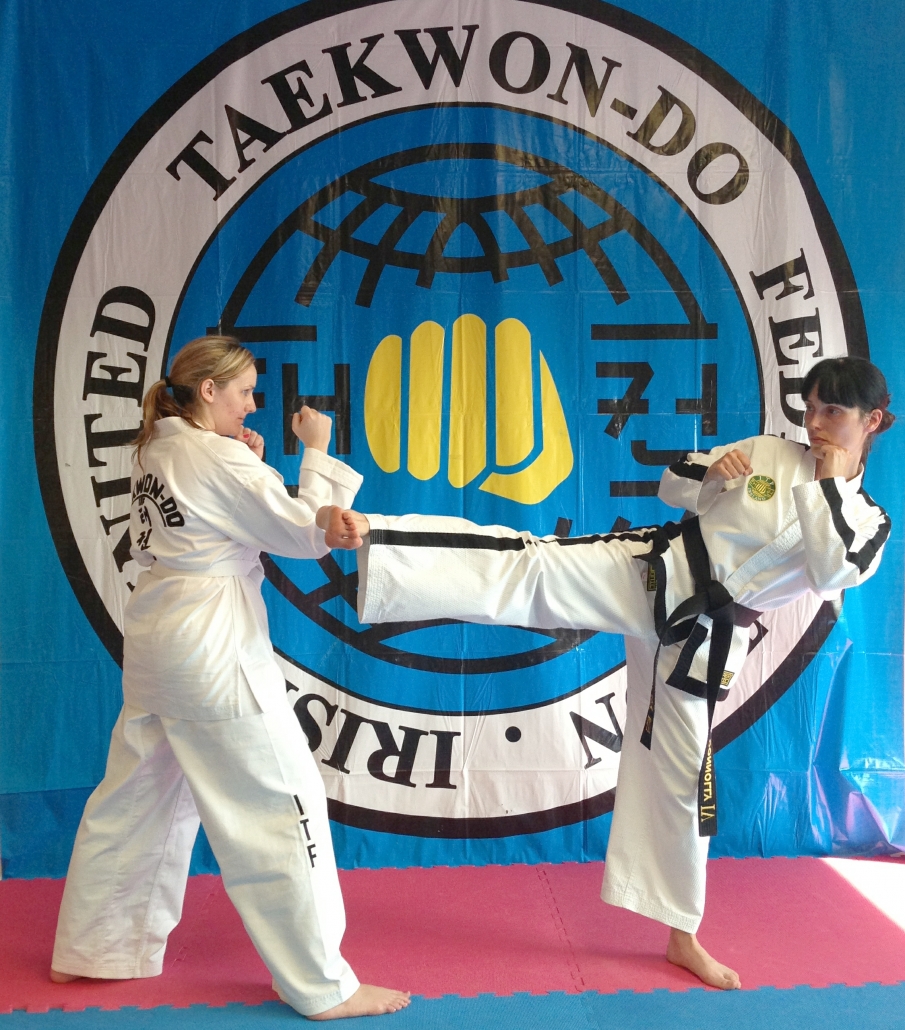In case you missed Part 1, you can read it here: https://connacht-taekwondo.ie/training-secret-of-taekwon-do-part-1/
3. To bring the movement of eyes, hands, feet, and breath into a single coordinated action.
This “secret” is heavily linked to the “Theory of Power.” It is consistent with concentration, whereby all parts of a technique comes to the critical point simultaneously. Typically the hands, feet and exhalation all stop simultaneously, with few exceptions, e.g. first part of consecutive punch in Juche. Beginner students generally have to put a lot of time into coordinating even Gunnun So Ap Jirugi (Walking Stance Front Punch) due to the challenge of synchronising the slower-moving step with the faster-moving punch.
4. To choose the appropriate attacking tool for each vital spot.
The longer a person is studying Taekwon-Do, the more relevant this “secret” becomes, particularly in step-sparring. As we move up the grades, more and more attacking tools are introduced and it is essential that we understand what vital spots these are most effective on. Leaving aside kicks for the time being, if we consider that hand attacks are typically divided into one of the following categories: punches, strikes and thrusts, we can investigate if these can be linked to the types of vital spots. For example, the vulnerable areas of the body such as the eyes, throat, solar plexus, kidneys, are extremely vulnerable to thrust attacks, as thrusts are designed to penetrate and damage internal organs. Similarly, flat areas of the body such as the temples, top-of-jaw, and neck are quite vulnerable to strikes. Take the eye sockets; these would be less vulnerable to a forefist than a fingertip thrust. These are not hard-and-fast rules, but more of a general guide, that I find useful.
5. To become familiar with the correct angle and distance for attack and defence.
There is such a vast selection of hand and foot attacks in Taekwon-Do to choose from, that there is an appropriate technique for most situations. Each technique, by its very nature, will be more appropriate in one scenario than another due to the distance needed, the trajectory of the technique, optimum height, etc… Taekwon-Do students are required to understand the different permutations available to us in any situation. We have various stepping techniques available to us to increase or decrease the distance between us and an opponent. There are short range, long range and even mid-air techniques available.
Example: Dollyo Chagi (Turning Kick) is most effectively used from a Yobap (side Front) position relevant to the defender. See Image 1. If the kick is delivered from a directly-facing position the trajectory of the kick may take the attacking tool past the intended target without the intended contact. See Image 2.


